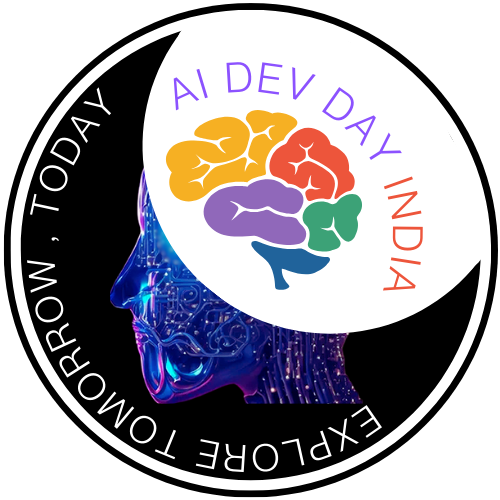The Day AWS Broke the Internet: Four Surprising Lessons in Cloud Resilience
On Monday, October 20, 2025, you might have woken up to find the digital world broken. Your smart doorbell wasn't responding, your banking app wouldn't load, and the work tools you rely on were suddenly offline. Across the globe, from gaming networks and crypto exchanges to major news sites and government services, a significant portion of the internet simply stopped working.
The experience was frustrating, confusing, and for many businesses, incredibly costly. The culprit was a massive, cascading outage at **Amazon Web Services (AWS)**, the world's largest cloud provider. While the headlines reported on the chaos, the event was more than a technical glitch; it was a stress test that challenged the architectural assumptions underpinning the global digital economy. It revealed fundamental truths about the internet's infrastructure that are both surprising and deeply counter-intuitive.
This analysis goes beyond the breaking news to uncover the four most important lessons from that day. These takeaways reveal that the digital world we depend on is more centralized, fragile, and paradoxically self-sabotaging than almost anyone realizes.
The Internet’s Fragile Heart is in Virginia
The global outage that crippled services from London to Tokyo didn't originate from a coordinated attack or a worldwide systems failure. It started in a single, specific place: AWS's US-EAST-1 data center region in Northern Virginia.
This is not just another server farm; as AWS's oldest and busiest hub, it's a legacy focal point for the entire internet, handling an estimated 35–40% of the company's worldwide traffic. The concentration of services in this one region means that when it faltered, the lights went out for a staggering array of companies.
The list of casualties shows the scale of the dependency: social media giants like Snapchat, financial platforms like Coinbase and Lloyds Bank, gaming platforms like Roblox, news outlets like The New York Times, smart home devices like Ring doorbells, and even the United Kingdom's tax authority, HMRC, were all knocked offline. A localized technical problem in Virginia caused a global economic disruption.
“The UK can’t keep leaving its critical infrastructure at the mercy of US tech giants. With Amazon Web Services down, we’ve seen the lights go out across the modern economy, from banking to communications. This isn't just an inconvenience; it’s a strategic vulnerability.”
The **AWS outage** serves as a stark reminder that while the internet feels boundless and distributed, much of its stability hinges on a fragile, hyper-concentrated core. A single point of failure in one corner of Virginia can trigger a chain reaction that silences a significant part of the digital world.
Your Favorite Features Are a Ticking Time Bomb (Metastable Failures)
One of the most unsettling truths revealed by the outage is a concept from distributed systems research known as "**metastable failures**." In simple terms, this is a failure state where features designed to *improve* a system's reliability, like automatically retrying a failed request, create a vicious feedback loop. This loop traps the system in an outage, preventing it from recovering even long after the initial problem has been fixed.
Imagine a clogged doorway. The feature designed to help, people trying again to push through, becomes the very reason no one can get through at all. The "solution" sustains the problem. This is a form of work amplification, where a system under stress is forced to do more work, not less.
During the AWS outage, this feature became a weapon of mass disruption. The initial root cause was a DNS resolution failure affecting a core database service, DynamoDB. When this caused some requests to fail, client applications automatically sent retries. The already-struggling services were suddenly hit with double the traffic, causing them to overload completely. Now, *all* requests, the new ones and the retries began to fail, guaranteeing the system could never catch up. The very tools built to handle small errors became the engine of a catastrophic, persistent failure.
The "Decentralized" Web Isn't
The world of cryptocurrency and blockchain is built on the philosophical ideal of decentralization, a network with no single point of control or failure. It was therefore deeply ironic that this sector was among the hardest hit by the centralized failure at AWS.
Major crypto platforms like Coinbase and Robinhood went down. More surprisingly, core infrastructure for the Ethereum network, including layer-2 scaling solutions like Base, Polygon, and Optimism, reported significant disruptions. The disconnect between philosophy and practice is stark: despite being a "decentralized" network, a staggering 37% of all Ethereum execution layer nodes are hosted on AWS.
“The whole vision behind blockchain was decentralized infrastructure, which we have completely failed on.”
This reliance on centralized cloud providers exists for practical reasons: it is far cheaper and easier for startups to deploy on AWS than to build and maintain their own hardware. However, it creates a profound structural risk for an industry that defines its very identity by its independence from the exact kind of central authorities that AWS represents. The outage proved that even the decentralized web has a very centralized backbone.

Your Cloud "Safety Net" Probably Wouldn't Have Worked
For years, the gold standard for **cloud resilience** has been a multi-AZ architecture: deploying an application across multiple "Availability Zones" within a single AWS region. These zones are physically separate data centers, so if one is taken out by a fire or a flood, the application can continue running in another. This is the safety net that countless businesses rely on. During the October 20th outage, it failed.
This strategy was useless because the root cause wasn't a physical failure in a single zone but a logical, platform-wide failure. The DNS resolution issue with DynamoDB was a *correlated failure* that impacted *all* Availability Zones in the US-EAST-1 region simultaneously, defeating the purpose of their physical separation.
The outage forced a critical shift in the industry's mental model for resilience: from protecting against physical disasters to protecting against logical failures within the cloud platform itself. This event exposed the need for more robust, albeit more complex and expensive, strategies that address this class of risk:
- Multi-Region: Deploying across entirely different AWS regions (e.g., Virginia and Oregon) to mitigate against platform failures within one geography.
- Multi-Cloud: Spreading infrastructure across completely different providers (e.g., AWS and Microsoft Azure) to mitigate against the failure of an entire cloud vendor. We recommend this external resource for more on vendor neutrality.
The outage was a harsh but necessary lesson for architects and engineers. True digital resilience isn't just about surviving the failure of a single server; it's about preparing for the failure of the cloud platform itself.
Building a More Resilient Future
The great AWS outage of 2025 was more than a temporary inconvenience; it was a global wake-up call. It revealed that the digital infrastructure supporting our modern economy is far more centralized, interconnected, and fragile than most of us ever imagined.
We learned that the very features designed to protect us can, under pressure, trigger their own catastrophic feedback loops, and that even systems built on an ideal of decentralization often stand on centralized foundations. The incident forces us to confront uncomfortable questions about the architecture of our digital world and the hidden risks we accept for the sake of convenience and efficiency.
As our society becomes ever more dependent on a handful of cloud providers, what is our collective responsibility to ensure the internet doesn't have a single off-switch?





